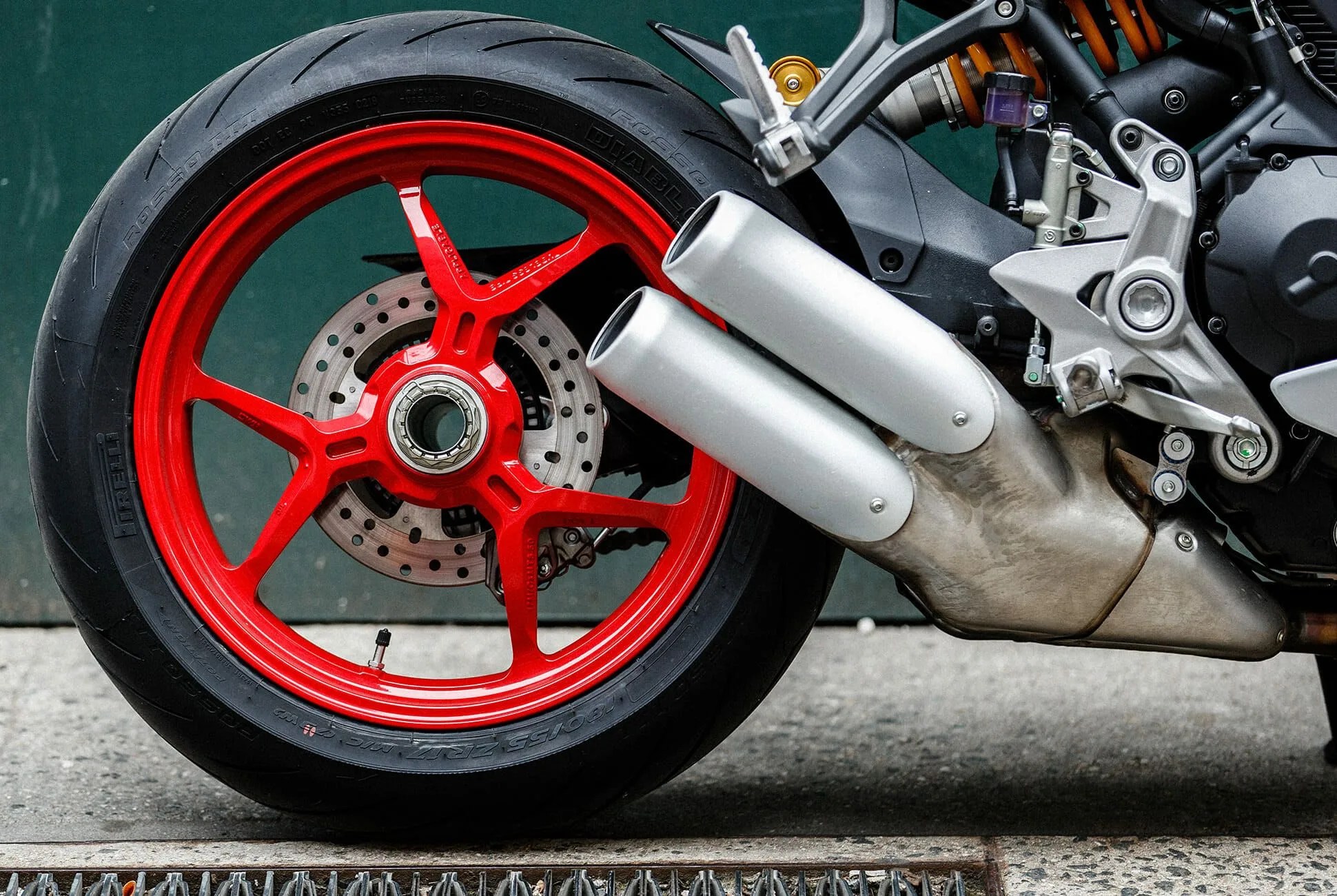There are only two types of wheels you’ll see rolling around underneath the average modern motorcycle: wire-spoked wheels and alloy wheels. From first commercial motorcycles in the early-1900s up until about the late-’60s, wire-spoke wheels reigned supreme. Then, in the ’70s, single-piece cast aluminum and magnesium alloy wheels skyrocketed in popularity.
So if single piece alloy wheels were the latest and greatest, and are still the standard for road bikes today, why are manufacturers still using wire-spoked rims? The answer isn’t so cut and dried. Both wheel solutions have their advantages and drawbacks. Which one is better depends on what and where you’re riding.
Performance
Spoked wheels are all but mandatory on off-road bikes — dirt bikes, enduros, scramblers and ADVS — for one simple reason: spoked wheels are more durable than single-piece cast wheels. On the road, while riding around on your street bike, you (hopefully) don’t encounter large rocks or massive ruts — maybe the occasional pothole, but nothing as unrelenting as a backwoods single-track, that’s for sure. Spoked wheels can bend and flex to a certain degree letting you tackle the rougher terrain.
Alloy wheels, because they’re more rigid, handle higher speeds and higher amounts of horsepower and torque with relative ease. The solid, inflexible nature also makes the single piece wheels more predictable in turns, especially at higher cornering speeds where stability and consistency are paramount.

Photo: Sung Han
